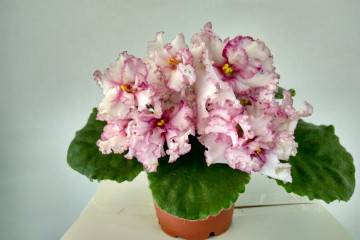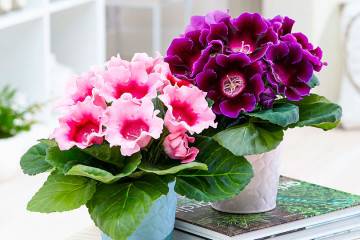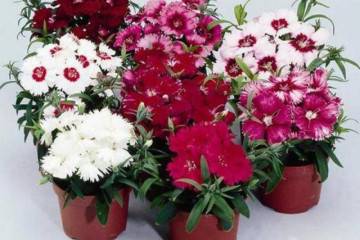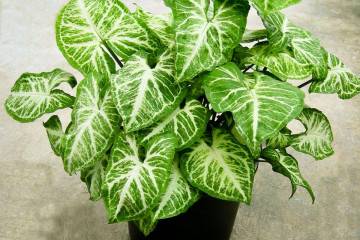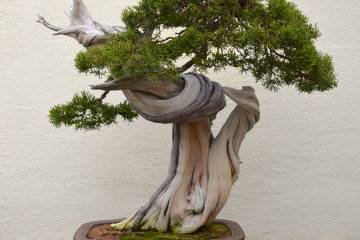How to grow a violet from a leaf at home
Content:
- How to propagate a violet at home, comparing the pros and cons of different methods
- Rooting a violet leaf in water
- Germination of violet leaves in agroperlite
- Germination of rootless leaves directly in the soil
- Reproduction by a peduncle: features of germination, soil selection, temperature and humidity
- Violet transplant after germination
- Growing from seeds
When at least one violet appears in the house, the desire immediately arises to plant more, to find other varieties. Florists grow plants on their own. There are several ways how to propagate violets vegetatively and by seeds. Each has its own characteristics.
How to propagate a violet at home, comparing the pros and cons of different methods
All vegetative propagation methods are suitable for the traditional violet Saintpaulia. Hybrid chimeras with striped leaves are propagated only by stepchildren and peduncles.
Leaflets
How to grow a violet from a leaf at home is described below. This is one of the popular ways to divide a bush. Pros - easy to get planting material, good survival rate. Cons - the rate of germination depends on the quality of the leaf plate and the state of the cutting.
Cuttings, parts of the stem
Stepchildren are chosen for grafting, they are actively formed after nitrogen feeding.
How do violets breed? - the cutting is carefully separated, placed in water for rooting, and then transplanted. The stepson should have up to 4 small leaves. Only such a stalk will grow successfully.
The easiest way to reproduce is to separate the basal rosettes from the mother bush. In this case, the main thing is not to damage the main bush.
A peduncle is used as part of the stem. This propagation method is only suitable for varieties with tall arrows.
Seeds
Details of seed propagation are set out below. The disadvantage of this method is a large amount of work, long-term care. Flowers from seeds will have to wait for a long time.
Rooting a violet leaf in water
When propagating violets with a leaf at home, the main thing is to follow the instructions step by step: choose the right planting material, maintain sterility, prepare a sharp knife or a new blade.
Leaf selection and preparation for germination
It is better to leave the lowest leaves alone, they are "lazy", have reached their maximum size, and will not germinate well. Leaves are not plucked out of the middle of the outlet - they are too young, they will not give a strong outlet. The best option is leaves of the second or third row. There should be no spots, dots, scratches, signs of pests on the leaf plate. The colors should be rich, not faded. Important indicators are leaf density, elasticity, then the root will be strong.
Optimal conditions for germination
You need to start caring for the leaf immediately after circumcision. How to grow a young violet from a leaf:
- The stalk is left up to 3 cm in size, the rest is cut off at an angle with a sharp blade or knife.
- The sheet is immersed in water to a height of 1.5–2 cm.
- The edge of the handle should not rest against the container, the leaf is supported with a sheet of paper, making a slot, or a hole is cut out in the lid of the container.
- Water is used standing or rainwater, in extreme cases - boiled.
- For disinfection, a charcoal tablet is immersed on the bottom.
Depending on the variety, the roots appear after 2 or 4 weeks. In case of suppuration, the petioles are pruned, the container is washed, disinfected. The optimal root length for planting is from 0.5 to 1.5 cm.
Germination of violet leaves in agroperlite
Agroperlite is a rock, expanded using a special technology. The material is environmentally friendly, retains water well, and has antibacterial properties. Growing in pure perlite is similar to rooting violets in water. Nutrients are needed for constant growth. A biostimulant is usually added to perlite to quickly grow roots on leaves. Children and stepchildren in agroperlite do not take root well, they need minerals that are not in the rock.
This growing method is suitable for keeping the planting material for two weeks. What is the best way to propagate violets later? - only by planting in soil mixture with agroperlite.
Germination of rootless leaves directly in the soil
Sometimes there is no way to control the process of root formation in water. There are several rules for planting violets directly in a pot with a leaf - step by step instructions:
- Lay drainage (a layer of foam or expanded clay) in a pot and with large drainage holes.
- Pour soil to a height of 3/4 of the container.
- Deepen the leaf stalk by 1 cm at an acute angle, fix the position with toothpicks.
- Insert the pot into a large planter or container without holes.
- Water the leaf, remove to a warm place without direct sunlight.
- Make a greenhouse - build a film shelter.
In such a greenhouse, the leaf is located before the formation of a leaf outlet.

Ready-made planting material, it can be transplanted into pots or exchanged sprouts with collector-growers
What should be the soil
It is imperative to check the acidity, the pH should be within 7.5. If it is lower, sphagnum moss or not rotted peat is added to the prepared soil. If the acidity is higher, liming is carried out, a solution of chalk or milk of lime is added. Violet grows only in loose soil, which is good for air and moisture.
Temperature, humidity, lighting
The optimal mode during the day is up to +27 ° С, at night - up to +19 ° С. Humidity must be maintained constantly. Light is needed diffused.
How to loosen, ensure the quality of the soil before planting the leaf
The soil must be loosened well. Florists advise sifting it through a colander or coarse sieve. Moisten the earth with a spray bottle to maintain airiness.
Reproduction by a peduncle: features of germination, soil selection, temperature and humidity
On the mother bush, a flowering shoot with large stipules is chosen. The buds must be torn off, they are not needed for planting.Sections are powdered with crushed charcoal for disinfection. Peduncles root like leaves in greenhouse conditions with high humidity and temperature. As a substrate, use the soil for Saintpaulia with perlite and moss. As a result of rooting, a small rosette should form at the stipule. Such planting material can be planted in a permanent place.
Typical germination errors
The optimal breeding time is spring or summer. At other times of the year, especially in winter, it is problematic to breed delicate flowers.
Rooting in indoor conditions is sometimes delayed. How to root a violet from a leaf without breaking the rules:
- the leaf is placed only in boiled or well-settled water. The container in which the leaf is rooted is pre-boiled or disinfected;
- the cut cannot be done with a blunt knife or blade, if the edges of the petiole are crushed, rot appears;
- the optimal root length is up to 1.5 cm. Too long roots do not take root well;
- the soil should be loose, not oversaturated with minerals and organic matter. Top dressing can be harmful;
- the ground is sterilized so that it does not contain fungal spores, infections;
- the leaf should not be immersed too deeply so as not to rot;
- the plant needs high humidity during the rooting period, be sure to make a greenhouse. In other conditions, Saintpaulia takes root poorly;
- you should not separate young shoots from mother bushes, children and stepsons should be complete. If they have only two leaves, they may die, because they received food from the mother's leaf or bush.
Violet transplant after germination
After germination, the violet can be transplanted.
How to determine the readiness of a plant for transplantation
The material is ready for planting if white roots up to 5 mm long appear. It is impossible to overexpose the leaves, a green growth will form.
How to choose and prepare the soil for planting
Violets prefer loose soil, slightly sour, poorly nutritious. When self-preparing the soil, take 5 parts of humus, 3 parts of sour peat and 1 part of river sand or brick chips.
Perlite or vermiculite is added to the resulting mixture in a 1: 2 ratio. Some growers prefer to use ready-made soil for Saintpaulias.
Optimal conditions: humidity, temperature, lighting
To plant a rooted leaf, the soil is well moistened, greenhouse conditions are created. Shelters are erected so that moisture does not evaporate, the temperature is maintained within +25 - 27 ° C.
Growing from seeds
Reproduction of violets from seeds is sometimes the only way to grow new curiosities. It is better to buy seed material at exhibitions or from experienced florists.
What growable seeds look like
To obtain seeds, growers choose the strongest plants of an interesting color with a characteristic flower shape.
There are three types of seed pods:
- ovoid;
- fusiform;
- or subulate.
The grains must be uniform in color and the same size. In some varieties, the seeds are elongated, black, in others, they are round, dark brown.
How to prepare seeds for planting in soil
Pour dry seeds from a box onto a white sheet of paper, shaking it, blow off small, underdeveloped, not shiny grains. Then select the largest specimens with a needle or a toothpick.
Optimal conditions for seed germination
The top layer of the prepared soil mixture is sieved for oxygen enrichment, mixed 1: 1 with perlite. The earth is well moistened with a spray bottle. The seeds are sown using a folded white sheet of paper that serves as a dispenser. The seeds are moistened, covered with dry sifted soil. The container is closed with a film or a lid - they make a greenhouse.
The recommended temperature during the day is + 22 ° С, at night - not lower than +18 ° С. the substrate is moistened, the greenhouse is ventilated. For irrigation, use settled or melt water. Seedlings appear in 16–20 days.

When growing seedlings in a transparent container, internal shoots form at the roots, this is an excellent planting material
Rules for the care of young sprouts
Sprouts dive 2 times:
- first, after the appearance of 4 full leaves;
- after the formation of outlets, you need to plant the seedlings in pots.
When transplanting, the soil is well moistened. In the total container, the distance between shoots should be at least 2 cm. It is recommended to add crushed charcoal to the holes. It is important to provide optimal lighting for the plants. When it is winter, daylight hours are extended to 14 hours. Young Saintpaulia does not like direct sunlight, dry soil.
Every florist dreams of collecting a collection of home violets. Knowing the methods of plant propagation, you can do it yourself. The main thing is to properly care for the seedlings.






